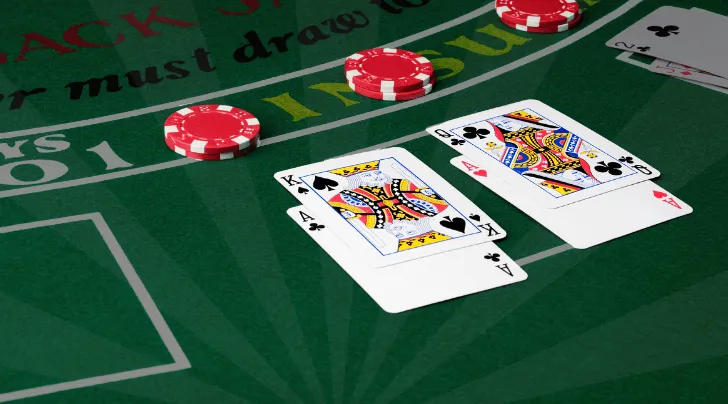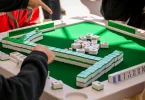DISCLAIMER: I am not a professional Blackjack player. This article is designed solely for educational learning and should not be used as financial advice.
Recently, I took a spontaneous trip to Las Vegas. My background in online poker made me confident I’d pick up Blackjack easily. However, after a rocky start and losing most of my chips on day one, I managed a comeback thanks to research and help from a friend on day two.
Find out how to use first deposit bonuses on this site.
If I could relive that weekend, here’s how I’d approach it differently.
Contents
Blackjack Basics
If you’re already familiar with how Blackjack works, feel free to jump to the next section about strategy.
Blackjack is a classic casino card game enjoyed globally. Players get two cards face up while the dealer receives one face up and one face down. Your objective is to beat the dealer’s hand by getting as close to 21 as possible without exceeding it. Winning doubles your wager; tying usually means you keep your bet; losing forfeits your stake. Face cards (10, J, Q, K) count as 10 points each, Aces can be either 1 or 11. You may “hit” by signaling the table or “stand” with a horizontal wave. Due to its fair odds and entertaining gameplay, every casino offers multiple Blackjack tables.
Foundations of Winning: Basic Strategy
Blackjack’s “Basic Strategy” refers to statistically calculated moves that nearly even out your chances with the house-about a 50/50 split if followed consistently. You’ll typically reference a detailed chart like this:
Fundamental Strategy Chart (Courtesy: wizardofodds.com)
By following these standard guidelines, you can expect break-even results over many games played. While the chart might appear complex at first, understanding several key terms will help:
- “4-8 Decks”: Las Vegas casinos normally use six to eight decks per table to make card counting more difficult and reduce reshuffling frequency.
- Soft hands involve an Ace (valued at 1 or 11); hard hands have no Ace.
- “Dealer stands on soft 17”: Prefer tables where dealers do not take an additional card with A-6-the edge goes to players here.
- “Pair/Split”: Getting two identical cards lets you split them into separate bets.
- “Double”: After seeing your hand and the dealer’s up card, you can double your original wager-an advantageous option when used correctly.
Since memorizing every rule is daunting for newcomers, I’ve condensed the essentials into seven practical tips that cover roughly 85% of situations:
Tip #1 (Hard Hands): Always stand on totals of 17 or higher.
Reason: Seventeen and above is considered secure.
Tip #2 (Hard Hands): Hold your ground with 13-16 unless facing a dealer’s 7 or higher.
Reason: The dealer must hit below 17 and might bust; let them take the risk when showing lower cards.
Tip #3 (Hard Hands): If you have 12 against a dealer’s 6-stand.
Reason: Though this feels tough, statistics show standing gives better odds than hitting in this scenario.
Tip #4 (All Hands): Double down on 9, 10, or 11 when your total beats the dealer’s up card.
Reason: Drawing a ten-value card occurs frequently enough (about one-third in a new deck) that doubling makes sense here.
Tip #5 (Soft Hands): Double down if you hold a soft hand and the dealer shows a 5 or 6.
Reason: The odds favor the player since dealers risk busting more often starting from these positions.
Splitting Pairs Smartly
Tip #6: Only split pairs if it puts you ahead of the dealer-except never split fives or tens.
Reason: Splitting increases your potential value across more hands but there are exceptions where holding is wiser.
Tip #7: Avoid splitting fives or tens.
Reason: Two fives together total ten-a great opportunity to double down; two tens total twenty-a very strong position already.
Before Hitting the Casino Floor
Important: Only gamble with what you’re prepared to lose. Setting strict limits prevents chasing losses-a common pitfall among players who withdraw extra cash when frustrated. Consider also setting an upper win limit; personally, I stop after tripling my buy-in.
A practical technique involves dividing your budget over multiple days-for example: visiting for three days with $900 could look like this:
- Day One: $300 bankroll
- Day Two: Add another $300 plus what remains from Day One
- Day Three: Add final $300 plus whatever’s left so far
For simplicity’s sake, sometimes I round my total budget up on the last day for easier calculations.
What To Look For In The Casino
When searching for tables inside any casino, prioritize ones featuring these traits:
- Low minimum bets ($5-$10)
- Only two or three players seated
- Dealer sticks on soft 17
- Bonus payouts for Blackjack hands-often around an extra 20%
While some places offer special variants like “Free Bet Blackjack”-which allow free doubles but come with specific rules like pushing ties on a total of twenty-two-I prefer sticking to traditional tables for consistency.
Once seated at your chosen table: buy chips, place your bet ($5 minimum), relax, and play strategically. Complimentary drinks are available but drinking alcohol while playing isn’t recommended if you want clear judgment.
As general advice: walk away if you lose half your session stake; likewise after doubling up or once all cards (“shoe”) have been dealt. Rotating tables keeps your decision-making sharp and lets you consult strategy charts between rounds (no phones allowed at most tables). Over time you’ll develop expertise-even recognizing nuanced scenarios such as whether to hold on paired nines versus a seven showing from the dealer.
Stepping Up: Intro To Card Counting
Caution: Don’t attempt advanced tactics until you’re fully comfortable with basic gameplay-they require concentration and speed that could otherwise backfire early on!
Once you’re ready for more complexity, consider learning “Hi-Lo” counting-a straightforward system tracking which cards remain likely in play:
- Cards valued between 2-6 add +1 to your running count.
- – Cards between 7-9 don’t change it (count as zero).
- – Ten-value cards & Aces subtract one (-1).
Track every card dealt by adjusting accordingly-you’ll have a running tally at all times. To calculate your “True Count,” divide this tally by remaining decks left in play (most games use six to eight decks). When this number rises above zero-especially +3 or higher-it signals an increased chance high cards will soon be dealt. A sample game round tallying counts by position







